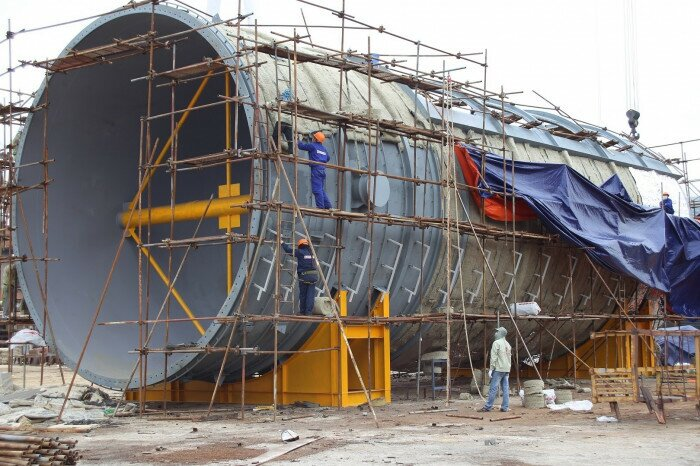Wind and solar power will bring the world into a new era
26/04/2023Last year’s record-breaking growth in wind and solar energy brought global electricity production to the cleanest level ever.
It is forecasted that from 2023, wind power and solar power will bring the world into a new era with the reduction of electricity production from fossil fuels, contributing to reducing emissions of the electricity industry. This remarkable information has just been announced in a report released yesterday by the independent climate consultancy Ember.
The annual global electricity assessment aggregates electricity sector data from 78 countries, accounting for 93% of global electricity demand. Last year, wind and solar energy accounted for 12% of global electricity generation, much higher than the 10% in 2021.
Together, all clean sources of electricity (including renewables and nuclear) account for nearly 40% of total global electricity – another new record high, according to the same report. The growth in wind and solar power generation in 2022 has met 80% of the increase in global electricity demand.increase in global electricity demand.

Malgorzata Wiatros-Motyka – Ember Senior Power Analyst said: “Wind power and solar power are planned to rapidly grow to the highest level. Clean electricity reshapes the global economy, from transport to industry and beyond. A new era of fossil fuel emission reductions means a gradual curtailment of coal power and the end of gas-fired growth is looming.”
As the power sector is the leading source of CO2 emissions, the International Energy Agency (IEA) says it needs to be at the vanguard of achieving net zero carbon emissions by 2040. This means that by 2030, wind and solar power generation must account for 41% of global electricity generation, compared to 12% in 2022.
Climate change, conflict, depletion of fossil resources such as coal and oil, and the unpredictable development of the current energy market are driving green transformation. Many countries are increasing infrastructure investment, researching and manufacturing modern technologies and equipment to harness the unlimited potential of these energy sources.
Climate change, conflict, the depletion of fossil resources such as coal, oil, etc., and unpredictable developments in the energy market today are promoting a strong green transition. Many countries are stepping up investment in infrastructure, research, and the manufacture of modern technologies and equipment to exploit the endless potential of these energy sources.

Canadian Prime Minister Justin Trudeau: “Across the country, our government is investing in and building an entire clean-tech ecosystem. From vital minerals to manufacturing and everything in it, Canada is quickly becoming the energy supplier a net zero-emissions world will need. Canadians have the skills and resources that a net-zero future requires.”
Roberto Zilles – Director of the Institute of Energy and Environment, University of Sao Paulo, Brazil: “In Latin America, we see that in the past 10 years, especially in Brazil, there has been a development of renewable energy sources. such as solar and wind power… Brazil can certainly become one of the major producers of renewable energy in the coming years, especially solar photovoltaic, thanks to its potential for electricity generation and resources that we own”.
Investment in renewable energy in Europe is accelerating.
In this green transition race, it is impossible not to mention Europe. Last year, the European Union (EU) led the world in the growth rate of renewable energy’s share in electricity production.

In this green transition race, it is impossible not to mention Europe. Last year, the European Union (EU) led the world in the growth rate of renewable energy’s share in electricity production.
Investment in renewable energy in Europe is accelerating, due to the positive results of efforts to save gas. Last summer, the European Union set a target of 15% gas savings. In summary, the actual savings exceeded 20% quite easily, warnings such as the risk of power cuts, and the risk of gas bailouts for Germany… did not occur. Germany is now confident enough to abandon nuclear power for good, thanks to renewables now making up a large enough share. The combination of developing renewable energy and reducing electricity waste is a feasible solution. The European Union is continuing to invest to achieve the goal of generating 45% of its total electricity from renewable energy by 2030.
Green transition requires technology and raw materials. If European countries master the technology, they still have to depend on external sources for some raw materials, such as lithium, cobalt, nickel, silicon, tungsten, or rare earths. In the middle of last month, the European Union planned to be self-sufficient in materials, and at the same time with a plan to support green transformation, allowing member countries to increase state subsidies for businesses in the field of green transformation. The price to pay will be high, but in return, developing renewable energy will help the European Union both achieve its emission reduction targets according to its climate commitments and increase its level of energy initiative.
The transition to renewable energy requires changes in policy, structure, and technology, of course, not overnight. However, starting early always brings certain advantages. With its great potential, according to research by the International Energy Agency (IEA), by 2025, renewable energy will become the main source of electricity production, providing one-third of the world’s electricity. It is estimated that wind and photovoltaic capacity will exceed the capacity of gas by 2023 and coal by 2024.
Source: VTV news
Must Read
You may be interested in


Priority is given to investing in 29 seaport projects with a total capital of over 31 trillion Vietnamese Dong sourced from the state budget

Ba Ria – Vung Tau to become national marine economic hub

Improving the capacity of shipbuilding enterprises, catching the wave of opportunities

Completing negotiations and signing power purchase agreements with 40/40 transitional renewable energy investors

Vietnam expected to emerge as a prominent logistics player in Asia

Freight transportation from Ho Chi Minh City port to Barion Head port

Ho Chi Minh City orients to develop Can Gio “superport”

The maritime industry strives for green transformation








